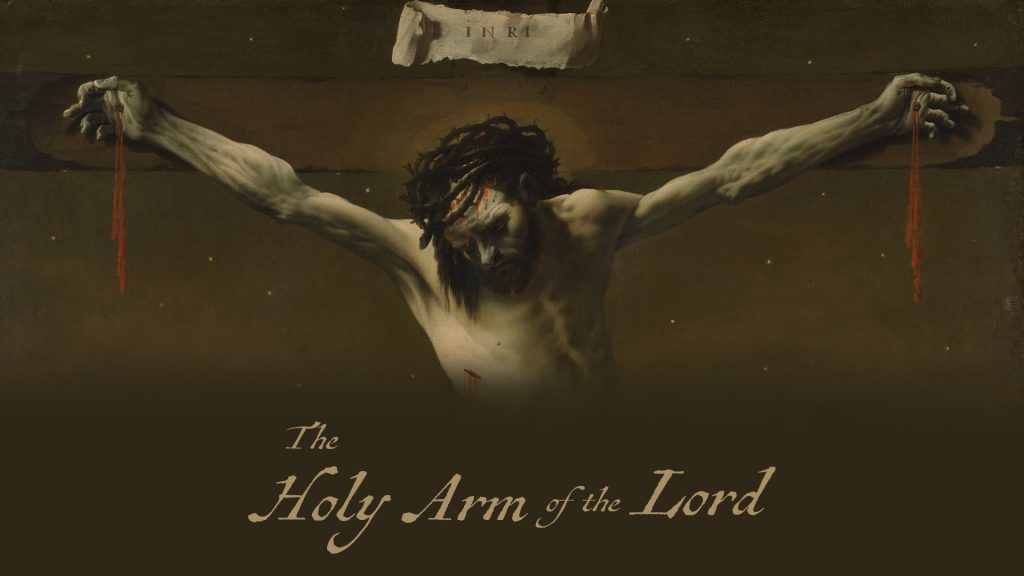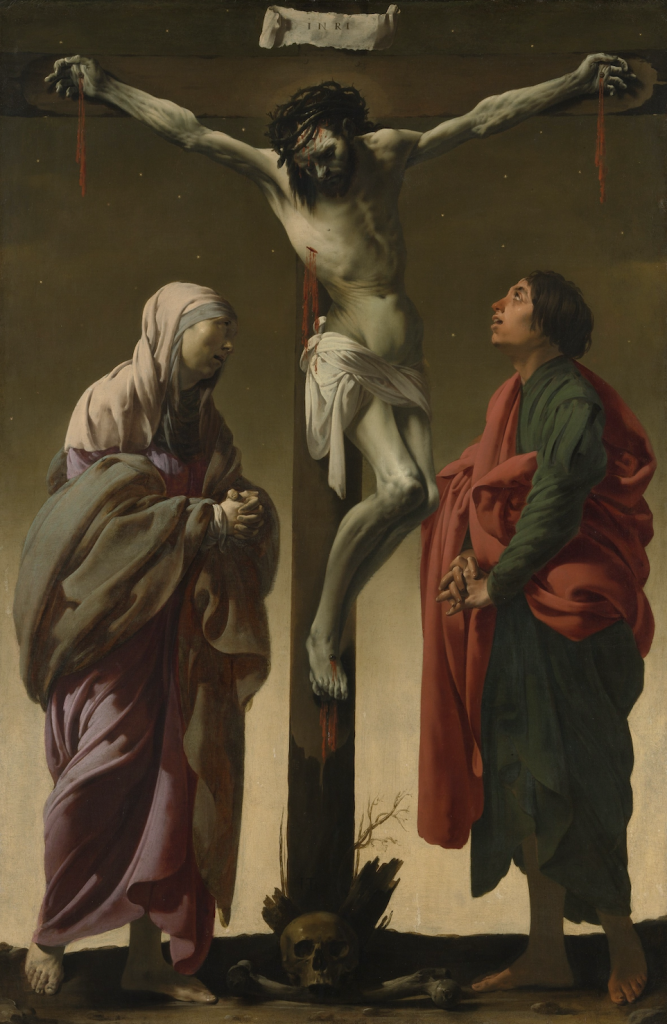The Holy Arm of the Lord

by Alex Vieira
At Christmas, we often think of Jesus as a small, vulnerable baby in the manger, yet we are also reminded that He is far more than He appears: He is God’s Son and our Saviour. But the prophet Isaiah invites us to ponder another image of Jesus that we rarely consider: “The LORD has bared His holy arm before the eyes of all the nations, and all the ends of the earth shall see the salvation of our God” (Isaiah 52:10).
Do you see Jesus in this passage? Have you noticed how He is depicted here? To fully understand this image, we must examine the Old Testament’s imagery of the “arm of the LORD.”
The word translated as “arm” appears 91 times in the Old Testament, used both in its literal sense, as a part of the body, and metaphorically, to signify strength or power. The metaphorical use often refers to God’s power to both punish His enemies and save His people. God Himself initiates this theological tradition of referring to His powerful actions using the word “arm,” during a crucial moment in Israel’s history: their slavery in Egypt. God declares to Moses that He will deliver and redeem them “with an outstretched arm and with great acts of judgment” (Exodus 6:6). Here, God’s “outstretched arm” will bring both redemption and judgment. After God accomplishes His work and the Israelites are safe, Moses sings of God’s deeds against the enemies: “because of the greatness of Your arm, they are still as a stone” (Exodus 15:16).
These references in Exodus provide the theological foundation for the recurring image of God’s arm throughout the Old Testament, recounting His victory in Egypt. Years later, in Deuteronomy, Moses reflects on Israel’s deliverance, often highlighting how “the arm of the LORD” saved them (Deuteronomy 4:34; 5:15; 7:19; 9:19; 11:2; 26:8). Across the Old Testament, this imagery remains consistent, with the “arm of the LORD” representing God’s power to judge His enemies and save His people, most commonly referring to His “outstretched arm”.
These references in Exodus provide the theological foundation for the recurring image of God’s arm throughout the Old Testament, recounting His victory in Egypt.
Isaiah, too, employs the image of God’s “arm” to describe His power to judge and save, but he introduces a nuanced understanding, as seen in the context of Isaiah 52:10. A few verses earlier, in Isaiah 51:5, God comforts His people with this promise of salvation: “My righteousness draws near, My salvation has gone out, and My arms will judge the peoples; the coastlands hope for Me, and for My arm they wait.”
God declares that His arms will “bring justice”, and the people will place their hope in His arm. This promise raises the expectation that God will act once again on behalf of His people, delivering them powerfully as He did in the past. The arm of the LORD will be revealed to bring both judgment and salvation. However, this promised salvation reaches beyond the immediate liberation from captivity and points to God’s ultimate act of redemption, an act that will extend His justice and salvation to all creation. The text continues with this broader perspective in mind: “Lift up your eyes to the heavens, and look at the earth beneath; for the heavens vanish like smoke, the earth will wear out like a garment, and they who dwell in it will die in like manner; but My salvation will be forever, and My righteousness will never be dismayed” (Isaiah 51:6).
After God raises His people’s hope, they respond with a plea: “Awake, awake, put on strength, O arm of the LORD; awake, as in days of old, the generations of long ago” (Isaiah 51:9). The people poetically address the “arm of the LORD,” asking it to awaken and act as it had in the past to bring salvation, recalling God’s mighty deeds of old. Their cry reflects a longing for divine intervention, but also reveals a misunderstanding. The arm of the LORD, God’s saving power, was not dormant or in need of awakening; it was not inactive but instead veiled, waiting for the appointed time to be revealed.
This sets the stage for Isaiah 52:10, where God’s response is not to “awaken” His arm but to bare it: “The LORD has bared His holy arm before the eyes of all the nations, and all the ends of the earth shall see the salvation of our God.”

“The Crucifixion with the Virgin and Saint John.” Hendrick ter Brugghen, 1625.
God’s plan of salvation was already prepared; and now His power was ready to be unveiled. The baring of His “holy arm” signals not a sudden awakening but the deliberate and decisive revelation of His salvation before the eyes of all the nations. However, what God lays bare is not His “outstretched arm,” as the people likely expected based on earlier depictions of God’s power. Instead, God bares His “holy arm.” This expression is striking, as it appears only one other time in the Bible—in Psalm 98. That Psalm becomes crucial to understanding the theology of Isaiah 52:7–10.
Both Psalm 98 and Isaiah 52:7-10 expand the scope of salvation beyond Israel to the “ends of the earth” and “all the nations.” In the Psalm, God’s salvation is made known “in the sight of the nations,” and the earth is called to “make a joyful noise” in response. Similarly, Isaiah speaks of God revealing His holy arm before the nations, so that “all the ends of the earth shall see the salvation of our God,” prompting His people to “break forth into singing.” Both passages call for a universal response of joy and celebration, reminding us of God’s ultimate act of salvation.
What does this have to do with Christmas? The answer lies in the overwhelming theology of human expectation and God’s response in bringing salvation to all nations. In the past, while God’s “outstretched arm” always manifested both judgment and salvation, the emphasis often lay on His power to destroy His enemies. There was deliverance for the people, but the context was usually a showdown between God and the nations. In Isaiah 52:7–10 (and Psalm 98), the image of the “holy arm” transcends past events and reveals something far greater in the history of salvation. Yes, there will be judgment and salvation like before, but the image of God baring His “holy arm” points to a divine act of unlimited scope and eternal significance: this act of salvation will be for all people, and for all time.
Now, all people and all creation are invited to sing with joy. This act of salvation is not merely God “bringing the people out” as in past exiles. This time, “Your God reigns” (Isaiah 52:7) not from a distance. The people “with their own eyes will see the return of the LORD to Zion” (Isaiah 52:8).
This Christmas, as we reflect on the baby in the manger, we remember that Jesus is far more than He appears. He is God’s “holy arm,” the ultimate manifestation of His power, who came to end the war against sin and the devil, and to bring salvation to the ends of the earth. Though we may not live in captivity like ancient Israel, we know the slavery of sin, feeling distant from God, and the fear of being forgotten in our struggles. Isaiah’s message calls us to wake up to a new reality: the King Jesus has come. So, let us give thanks and rejoice in the peace, hope, and salvation He brings to all creation.
———————
Rev. Dr. Alex Vieira is Professor of Exegetical Theology at Concordia Lutheran Seminary in Edmonton.



